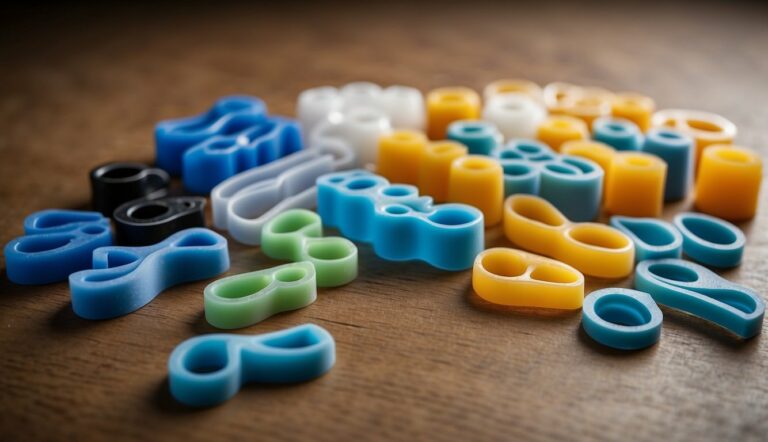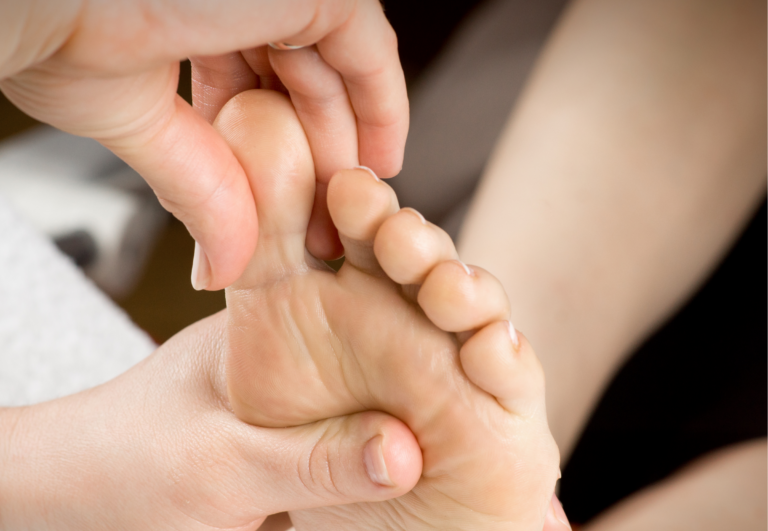What Are Toe Spacers Used For? Typical Use Case, Benefits, and Considerations
From my experience, toe spacers aren’t just about comfort; they play a significant role in improving balance and overall foot function. The separation of the toes can allow for better alignment, which in turn may contribute to improved balance and stability during physical activities. Athletes, such as dancers and soccer players, often explore the use of toe spacers to enhance performance and reduce the risk of injury.
Certainly, maintaining foot health is more than just dealing with temporary discomforts—it’s about long-term care and wellness. Using toe spacers regularly can be a preventive measure, supporting the foot’s natural shape and function. They are not a one-stop cure for all foot issues, but as part of a larger approach to foot care, they have a valuable place in fostering healthy, strong feet.
Toe spacers are simple yet effective tools for promoting foot health. They are designed to spread your toes apart, which can help mimic the natural spacing of feet, something that’s often compromised by narrow shoes. By using toe spacers, I’ve found that not only does the comfort level increase for people who spend long hours on their feet, but they can also bring a sense of relief from certain types of foot pain.
Benefits of Toe Spacers
Toe spacers are often overlooked but they serve as an essential tool in foot care, offering numerous benefits from pain relief to improving toe alignment.
Alleviates Foot Pain
I’ve noticed that toe spacers can significantly ease foot pain. By gently separating the toes, they reduce the pressure on bunions and corns, enhance circulation, and facilitate pain relief, especially after a long day on your feet.
Promotes Toe Realignment
Routine use of toe spacers helps in the realignment of toes, working to correct deformities like hallux valgus, more commonly known as bunions. They maintain proper toe spacing which, over time, can contribute to better foot health.
Improves Balance and Stability
Strengthening foot muscles with toe spacers also improves balance and stability. I’ve seen how they promote a wider, more natural toe spread, enhancing flexibility and mobility, which are crucial for maintaining a proper gait and preventing falls.
Types of Toe Spacers
Toe spacers are used to alleviate pain and correct the alignment of the toes, and they come in various materials and designs to cater to different needs. They range from simple foam separators to sophisticated silicone gel models that provide cushioning and adapt to the contours of the feet. Choosing the right type can make a significant difference in comfort and effectiveness.
Materials and Design
Based on my experience, toe spacers are most commonly made of silicone, gel, or foam materials. Silicone toe spacers are durable and can be cleaned easily, making them a favorite for long-term use.
Gel toe spacers often contain medical-grade gel, which is soft and provides excellent cushioning, contributing to immediate relief from discomfort. Foam toe spacers are typically the most cost-effective option and offer basic separation but may lack the longevity of silicone or gel varieties.

Sizing and Fit
Proper sizing and fit are crucial for the effectiveness of toe spacers. Ill-fitting toe spacers can lead to further discomfort or even exacerbate toe misalignment. Silicone gel toe spacers are advantageous as they tend to be more flexible and can fit a wider range of toe sizes.
While some spacers come in one-size-fits-all, others offer multiple sizes or an adjustable design to ensure a more personalized fit, which can be especially important for those with particularly narrow or wide feet.
Common Foot Conditions Addressed
Toe spacers are a practical tool in managing several foot conditions that affect comfort and mobility. These simple devices can be integral in addressing issues of toe alignment and relieving pressure on the feet.
Management of Bunions and Hammertoes
Bunions, a prominent bump on the side of the toe, often develop from tight shoes or genetic predisposition. I’ve seen how toe spacers effectively create space between the big toe and second toe, which reduces the risk of hallux valgus, the medical term for the outward bending of the big toe. This realignment can reduce pain and improve foot function.
For those with hammertoes, a condition where the toe has an abnormal bend in the middle joint, toe spacers can help reposition the toes and reduce pressure. They do this by preventing the toes from overlapping which not only alleviates pain but can also help avoid the formation of corns and calluses caused by toes rubbing against each other or tight footwear.
Prevention of Foot Deformities
Using toe spacers can play a preventive role in maintaining proper arch support and avoiding foot deformities. For example, individuals with flat feet may benefit from the spacing as it promotes better alignment and distribution of pressure along the foot.
Moreover, conditions like plantar fasciitis, an inflammation of the tissue running along the foot’s arch, can be indirectly aided by toe spacers as they assist in maintaining correct foot posture.
Additionally, by preventing the toes from squeezing together, the risk of painful neuromas, often caused by compression of the nerves between toes, is minimized. Maintaining the spread of the toes can also prevent the development of new deformities and ensure better overall foot health.
Usage and Care
In the realm of foot care, toe spacers play a crucial role. They are designed not only to reduce friction among toes but also aid in rehabilitation for a variety of toe conditions. My experience with these devices has shown me the importance of following specific guidelines for use and maintaining them properly to get the best results.
Proper Use Guidelines
To use toe spacers effectively, always start by ensuring that your feet are clean and dry. Place the spacers between your toes, making sure they fit snugly but without causing discomfort.
It’s essential for the effectiveness of toe spacers, including night splints and toe stretchers, to wear them for the recommended duration. For some, this might be during certain hours of the day, while for others, it could be overnight.
- Duration: Wear toe spacers for the time prescribed by the manufacturer or a podiatrist.
- Fit: They should sit comfortably between the toes without pressing too hard.
Maintenance and Hygiene
Keeping toe spacers clean is vital to prevent infections and irritation. Wash them regularly using mild soap and warm water, then let them air dry completely before the next use.
If you’re using toe spacers made of gel or silicone, avoid using harsh chemicals or heat sources for cleaning, as these can degrade the material.
- Cleaning Frequency: After each use or at least daily if used overnight.
- Cleaning Method:
- Rinse under warm water
- Use a gentle soap
- Air dry completely
For toe spacers that come into contact with insoles or other orthotic devices, ensure compatibility to avoid any material reaction that might degrade your toe spacers. Regular inspection for wear and tear is also necessary to guarantee their continued efficacy and safety.
Considerations Before Use
When thinking about using toe spacers, it’s important to consider your individual health context and the potential long-term effects. Proper guidance and understanding of their impact are crucial for safe and effective use.
Consulting a Healthcare Professional
Before incorporating toe spacers into your routine, consulting a healthcare professional is a critical first step. This is particularly true if you have underlying health conditions like diabetes, arthritis, or rheumatoid arthritis, which can affect foot health.
A podiatrist can assess your specific needs and determine if toe spacers could provide the temporary relief you’re seeking or if they might interfere with an existing injury or condition. They might also refer you to a foot surgeon if your condition requires more intensive treatment.
Long-term Use Impact
Considering the long-term impact of toe spacer use is important for maintaining foot health. While toe spacers can offer relief, over-reliance on them without addressing underlying biomechanical issues could lead to other complications.
Prolonged use should be monitored to ensure it complements other therapeutic measures rather than solely depending on them for relief. Regular check-ins with a healthcare provider can help track the progress and make necessary adjustments to your treatment plan.





